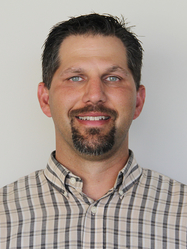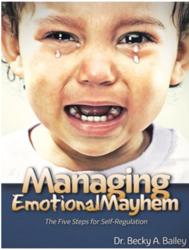They’re the forgotten, the 2.3 million people in US prisons. The overwhelming majority of them have experienced significant childhood trauma. Before you click out of here, this isn’t another boo-hoo story, as some of you might describe it, about the dismal state of our corrections system, for inmates and guards alike. (Oh, yes, it is profoundly dismal.) This is a story about how one tiny part of it isn’t so dismal, and actually addresses head-on the fact that most (91 percent) of the approximately 2.3 million prisoners will finish their sentences and go home. To your neighborhood. So….wouldn’t you want the prisons to help these guys and gals so that they, and by definition, we, come out happier and more well-adjusted than when they went in?
Well, yea-uh.
Ok. Just in case you glossed over it, let’s go back to that sentence about childhood trauma. It is precisely why the 2,300 inmates at Washington State Penitentiary in Walla Walla, Wash., ended up there. Over the last 20 years some profound, intense research revealed that people who have a lot of childhood adversity have seven times the risk of becoming an alcoholic, 12 times the risk of attempted suicide, twice the risk of cancer and heart attacks. They’re more violent, more likely to be victims of violence, have more broken bones, more marriages, and use prescription drugs more often than people who have no childhood adversity. And those are just the few drops in the bucket of how childhood trauma affects people’s lives.
A big surprise in the groundbreaking CDC-Kaiser Permanente Adverse Childhood Experiences Study (ACE Study) — besides that most of us have at least one ACE — was how “normal” and ordinary some of the types of adversity are. Seeing your parents divorce. Living with a family member who’s an alcoholic or depressed, as well as having other mental illness. Verbal abuse, which includes being screamed at every day as well as being quietly told by your mother, “I wish you’d never been born, you freak.” Then there’s the stuff that you expect will mess with your head — physical and sexual abuse. Physical neglect. Emotional neglect — hardly being acknowledged or talked to during your entire childhood. Watching your mother being hit. And having a family member in prison. Since the ACE Study was published, dozens of other ACE surveys showed similar results. Recognizing that definitely more than 10 types of ACEs exist, other surveys have included racism, bullying, witnessing violence outside the home, serious illness or accident in the family, experiencing war, losing a family member to deportation, ending up in foster care, etc.
All these experiences damage the function and structure of kids’ brains. Kids experiencing trauma act out. They can’t focus. They can’t sit still. Or they withdraw. Fight, flight or freeze – that’s a normal and expected response to trauma. Kids who are experiencing trauma live in survival mode. So, they have a really hard time shifting their attention from survival brain to learning brain. Their schools often respond by suspending or expelling them, which further traumatizes them. When they get older, they cope by drinking, overeating, doing drugs, smoking, as well as over-achieving or engaging in thrill sports. Without intervention, these coping behaviors may continue throughout their adult lives. To them, these are solutions. They’re not problems. Nicotine reduces anxiety. Food soothes. Some drugs, such as meth, are anti-depressants (and used to be prescribed as such). So, telling someone how bad smoking is for them isn’t likely to make much of an impression if it relieves their anxiety.

The few prisons in the United States that understand and address ACEs and toxic stress see some pretty remarkable changes. At Washington State Penitentiary, Tony McGuire talks to the inmates in his construction trades apprenticeship preparation (CTAP) class about ACEs, trauma and resilience every single day. Not only is he teaching the guys a trade, but he also teaches them how to be a healthy, happy and well-adjusted employee. Note: Becoming a healthy, happy, well-adjusted employee is way harder than basic carpentry, plumbing, electrical and HVAC (heating, ventilation, air conditioning).
McGuire, who is employed by Walla Walla Community College to teach the course, treats the 12 to 16 members of each class, which is taught four times a year, as if they are workers on a job site. Over 14 weeks, the inmates, all from the medium security part of the prison, split into four teams to build four 8-foot by 8-foot houses. They learn professionalism at the same time as they’re learning how to install a plumbing system.
But it’s damn hard work. It’s stressful to figure things out. It’s frustrating if you do something wrong and have to do it all over again. It’s aggravating to work with someone who’s slower than you. It’s infuriating to work alongside someone who’s faster than you and always showing you up. And because the inmates all have ACEs and live in prison, often, at the beginning of the course, their tolerance for emotional stress lasts for no more than a couple of whacks of a hammer. They throw down their tools and start cussing.
To get their attention — and a dose of what will happen to them in the outside world if they lose it — McGuire says (never yells), “You’re fired.”
“When these guys are living so close to the breaking point all the time, they are functioning in survival mode,” he explains. He’s teaching them to “problem-solve and do work confidently in a way that makes them employable.”
At the beginning of the course, he teaches them about how their brain gets twisted into survival mode, and why they’ve been stuck there for most of their lives by explaining ACEs science. But he teaches from a perspective of resilience. Yeah, these things that happened to you were awful, truly awful. Nothing a kid should have to endure. But, guess what? You weren’t born bad. You had no control over what happened to you when you were a kid…no control. (No, your parents didn’t divorce because of you. No, your dad didn’t beat you when you were four because you were a bad kid. He was out of control, flailing with his own ACEs.) The way you coped — smoking cigarettes and weed, drinking alcohol, using opioids, overeating, having sex with a different person every day or week, thrill sports, cutting, and even overachieving — was completely appropriate, and kept you alive. And, best of all, you can change.
This is news to those serving jail time. Being over-reactive or getting triggered into a rage has been such an ingrained way of life that some of the guys don’t even know there’s another way to live. With each blowup, with each meltdown, McGuire reminds them: “Respond. Don’t react.”
To develop the brain muscles to do that, they learn about ACEs science: the ACE Study, how toxic stress from experiences those ACEs eats away at the brain and the body and the spirit, how it’s passed on from parent to child (epigenetics), and how practicing resilience can actually heal your brain and body to start to make you whole again. To get an idea of some of the ACEs that they’ve experienced, they take the ACE survey. A resilience survey helps them identify what resilience factors are, if they had any, and how to integrate them into their lives.
McGuire provides a booklet, “Resilience Building Blocks for Life”, published by the Community Resilience Initiative (CRI) in Walla Walla, WA, one of the pioneering communities in the worldwide ACEs movement. The booklet reviews ACEs and brain science, including how to figure out what brain state you’re in. Are you deep in the brain stem, in survival mode and just barely hanging on? Or are you in the limbic or emotional connection mode? Or in the top front of the brain, the prefrontal cortex, where we learn and from which we guide ourselves to make good decisions? CRI also produces a deck of 42 “Resilience Trumps ACEs” cards. Each card features one resilience building block: Developing a Sense of Control. Developing Positive Relationships. Giving Back to the Community.
To many of you, these resilience factors probably seem elementary, but in families that have significant troubles, kids often aren't taught these building blocks; they can carry these deficits with them their entire lives until they're fortunate enough to run across someone like McGuire. After learning about the basics in the first classes, they spend five minutes of each teaching day discussing one card with McGuire. Since the prison doesn’t allow decks of cards, McGuire obtained permission to copy them onto sheets of paper that inmates can tape to the walls of their cells.
McGuire helps them understand that when we make sense of how our brains work, we’re better equipped to respond, not react. He tells them about ROLES, also explained in the booklet, a useful acronym that helps them take responsibility for their responses in interactions with people. ROLES encourages people to become stress detectives in five easy steps: Recognize your needs and emotional state. Observe the other’s needs and emotions. Label the emotions you’re seeing. Elect (believe) that there’s positive intent (even though people may show anger to hide their fear). And solve the situation. McGuire helps the men run through scenarios in which they use the process.
 He’s put together a small library for class participants. The books include Emotional Intelligence by Daniel Goleman (“This really spoke to me,” says McGuire. “How can you manage when you wear your heart on your sleeve?”). Becky Bailey’s Easy to Love, Difficult to Discipline, “for dads in the class who discipline out of anger.” When the class participants look at the cover of Bailey’s Managing Emotional Mayhem: The Five Steps for Self-Regulation, “they think it looks childish, but it’s really practical, and, after they read it, they think so, too.” Driven to Distraction, by Edward Hallowell and John Ratey — “It’s an ADD-ADHD book. I’m a high-functioning ADD person, and I’m sure these guys could use it, too.” Bessel van der Kolk’s The Body Keeps the Score — “how the body integrates past trauma.”
He’s put together a small library for class participants. The books include Emotional Intelligence by Daniel Goleman (“This really spoke to me,” says McGuire. “How can you manage when you wear your heart on your sleeve?”). Becky Bailey’s Easy to Love, Difficult to Discipline, “for dads in the class who discipline out of anger.” When the class participants look at the cover of Bailey’s Managing Emotional Mayhem: The Five Steps for Self-Regulation, “they think it looks childish, but it’s really practical, and, after they read it, they think so, too.” Driven to Distraction, by Edward Hallowell and John Ratey — “It’s an ADD-ADHD book. I’m a high-functioning ADD person, and I’m sure these guys could use it, too.” Bessel van der Kolk’s The Body Keeps the Score — “how the body integrates past trauma.”
The first time McGuire learned about ACEs was in Fall 2016, in a seminar organized by Teri Barila, co-founder of CRI. When he filled out the ACE questionnaire, he counted up his ACE score. It was 8. That’s significant, because the higher your ACE score, the higher your risk of physical, financial, mental and social health consequences. “Oh, this is interesting,” he thought. It explained a lot of his childhood and his actions growing up. But what probably kept McGuire from spending time in prison was that he was really fortunate to have had extremely strong resilience factors.
After his father left when he was four years old, his family moved. “Our neighbors were like my surrogate parents,” he says. “They really helped my mom and me. My best friend’s dad included me in sporting events and family outings. That was very pivotal for me. I was also the baby, and my mother treated me a lot differently after my dad was gone. I didn’t experience as much abuse as my siblings. They put a lot of blame on her. I really loved her. She was open about everything. She never said, ‘You don’t need to know that.’”
He also developed close friendships with 15 high school classmates. Most of them still live in Walla Walla. “All of us are still close,” says McGuire. “We’re raising our kids together.”
Despite all his ACEs, these resilience factors enabled McGuire to have a successful 16-year career as a contractor before joining Walla Walla Community College to teach the CTAP course, a solid marriage for 22 years, and two kids who are steeped in ACEs science.
“I’ve been teaching my kids about ACEs, trauma, brain states,” says McGuire. “My daughter, who’s 15, just told me the other day: ‘My brain state’s bad today, Dad.’ They’ve seen me teach this, and they’ve seen how using this knowledge has affected me and our marriage. My wife and I sat down with the kids and went through the resilience factors to see how many they had. We came up with 38 out of 42.”
After he learned about ACEs science, McGuire immediately incorporated it into his course. Over the last five years, 236 people have completed the course. About 110 of those who participated in the course since 2016 have learned about ACEs science. At some point, he'd like to start gathering data on how participating in the course is affecting recidivism.
McGuire has also become a champion for spreading this knowledge. Over the last 16 months, he’s given 40 presentations about ACEs science, including for students at the community college, members of the state board of community technical colleges, and the directors of all the housing authorities in Washington state. (He acknowledged their contribution to his life when he told them that they’d put a roof over his head for the first 10 years of his life.)
Within the prison, ACEs science, including resilience, is getting traction outside his class. McGuire heard from one former inmate who told him that the course had changed his life. He hears reports of fathers in phone conversations telling their wives and children about resilience factors. Small groups of inmates read and discuss books and the resilience factors. He’s supposed to do a presentation for the superintendent of the prison and other upper level managers this spring. It’s conceivable that Washington State Penitentiary will figure out a way to integrate ACEs. They aren’t entirely closed to new ideas, since they already support a thriving nonprofit, Sustainability Practice Labs. The organization employs more than 100 inmates to repair TVs, grow plants in a hydroponics project, repair bikes and furniture, renovate signs for state agencies, manage a vermicomposting program with nine million worms, and make quilts and teddy bears for nonprofit auctions. But integrating ACEs science throughout the prison will take time….changes in prison move as slowly as prison time.
When he first started integrating ACEs science into his class, McGuire says inmates hadn’t heard anything about it before they signed up for the class. “Now they’re asking about it right when they come in the door,” he says, so he knows that it’s being talked about widely.
One of the first people to learn about ACEs science after McGuire integrated it into the class was Erik Nedrow, a 35-year-old construction worker from Clarkston, WA. Nedrow was sentenced to 10 years in prison after he drove drunk, sped through a stop sign, slammed into another car and killed its driver. It wasn't his first offense. He'd had a long history of drinking and driving, as well as a hit-and-run. He entered prison in August 2016, and began McGuire’s course the following month.

“I was trying to better myself anyway,” says Nedrow, “to focus on things that I didn’t have time to focus on in the streets: How to be nice to family and friends. How to be a better person.”
Learning about ACEs and resilience has helped him become aware of things he hardly ever did before the accident: “Thanking others. Telling your family and friends back home that you love them. Actually saying it verbally means something to them.”
He has the paper with the resilience cards taped to the wall in his cell. “It gives me something to focus on for the day,” he says.
After the course, McGuire’s teaching assistant left prison, and Nedrow applied for the job. Since he had a solid background in the building trades, got along well with other inmates and grasped McGuire’s intent for integrating ACEs science into the class, McGuire hired him as the new teaching assistant. He’s just been rehired for another two years.
The specific resilience building blocks that Nedrow focuses on for himself are developing friendships, expressing feelings, being very upfront and honest, “rather than trying to be the tough guy,” he says. “Men see expressing feelings as a kind of weakness. They think it’s not manly to feel these ways, when it’s the exact opposite. To learn to break that barrier of the macho guy took some soul-searching.”
Ironically, Nedrow’s mother, Luann Nedrow, had been integrating practices based on ACEs science in Grantham Elementary School in Clarkston, Wash., where she taught second grade. Two years before her son was sentenced to prison, the school was dumbfounded when it did anonymous ACE screenings of students in grades 4-6, and found that 67 percent had 6 or more ACEs.

But it wasn’t until after her son’s accident that Luann Nedrow connected his own childhood trauma with his life course of alcoholism and reckless behavior. “Now I can look back at and see the connection,” she said when I talked with her in 2017. “I grew up with alcohol issues in my family. I didn’t know we were different than anyone else at that time, because it was all around us. Erik grew up with his dad being an alcoholic and obsessive. We never discussed it. It’s just the way life was.”
The car crash also helped her realize that to heal, she needed to open up to friends and express her feelings. “When I was younger, I was told that people don’t want to hear what your problems are,” she said. “So, I kept everything inside. Once all this happened with Erik, I relented. I learned that I have to talk to people. Now I’m less afraid —everybody has issues. Opening up is healing for me. That accident is what it took for me to address, to understand that I had ACEs and make it through these things.”
She and her son were able to develop a close relationship. She visited him at the penitentiary for an extended family visit. “It’s been a really important learning phase in his life,” she said. “When we talk, he has made me proud. I often think: That’s coming out of my kid’s mouth?”
When McGuire had a speaking engagement near her town, she came to see him, to thank him for the work he’s done with her Erik. “You’ll never know the effect you’ve had on my son,” she told McGuire.
Shortly after that visit in May 2018, McGuire heard from Nedrow that Luann Nedrow had cancer. She died four months later.
Erik Nedrow was able to come up with the $1,000 cost to attend the funeral, albeit in shackles and flanked by guards. After he returned, he told McGuire: “That day I gave her my best me ever. I gave my dad the best me I’ve ever been.”
__________________
McGuire is speaking about his work at the 4th Annual Beyond Paper Tigers Conference in Pascoe, Wash., as part of the "Big Ideas" series, in the Big Room, from 12:30-2:00 pm on June 27, 2019.







Comments (0)